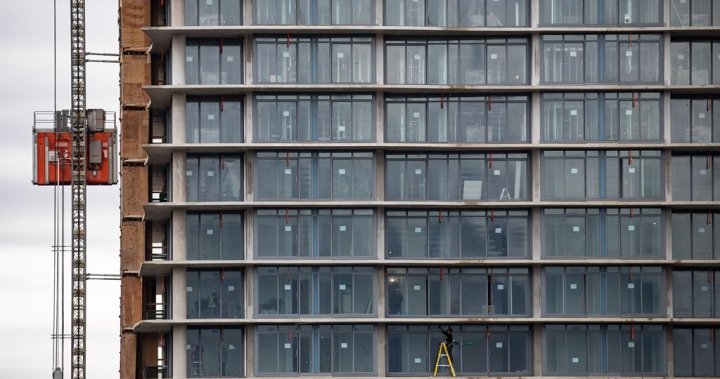Canada
How Trump’s tariffs could hurt Canada’s home construction industry

The Looming Threat of U.S. Tariffs on Canada’s Housing Market: A Comprehensive Analysis
Introduction: Uncertainty in the Housing Market
The specter of U.S. tariffs hangs precariously over Canada’s homebuilding industry, casting a shadow of uncertainty at a time when the housing market is already navigating a slowdown. Following a series of interest rate hikes by the Bank of Canada, the once-thriving market has transitioned into a buyer’s market, characterized by slower sales and a higher inventory of available homes. This shift has left homebuilders grappling with the unpredictability of future projects, as the imposition of tariffs threatens to exacerbate existing challenges.
Economic Concerns: Potential Shocks and Market Impact
Experts like Kevin Hughes and Tania Bourassa-Ochoa from the Canada Mortgage and Housing Corp. (CMHC) have voiced concerns about the broader economic implications of tariffs. The primary worries include inflationary pressures on consumer goods and potential disruptions to the labor market. These factors could precipitate an economic downturn, leading to reduced housing sales and starts, further straining a market already in need of more housing. As Kevin Lee from the Canadian Home Builders’ Association points out, economic slowdowns inevitably result in fewer housing starts, compounding the housing shortage.
Builder Risks: Navigating Unpredictability and Financial Uncertainty
Homebuilders face significant risks in this climate of uncertainty. Projects require substantial upfront investments in financing, material sourcing, and staffing, all of which demand predictability and stability. Scott Andison of the Ontario Home Builders’ Association highlights how builders must predict market demand, a task made increasingly difficult by the threat of tariffs. Clay Jarvis of NerdWallet further notes that potential job losses and decreased demand could deter builders from initiating new projects, especially if costs rise while consumer interest wanes.
Supply Chain Disruptions: The Ripple Effect of Tariffs
The integrated supply chains between Canada and the U.S. are particularly vulnerable to tariffs. Materials often cross the border multiple times during production, becoming subject to U.S. taxes. Retaliatory measures by Canada, such as tariffs on appliances, could inflate costs further. Scott Andison emphasizes that reliance on U.S.-imported goods, particularly for high-rise developments, could lead to price hikes, disrupting supply chains and domestic markets. Steel and aluminum, already facing a 25% tariff set to begin in March, could become less competitive in U.S. markets, driving up domestic costs.
The Role of Government: Mitigating Costs and Trade Barriers
Both Kevin Lee and Scott Andison advocate for government intervention to alleviate the burden on homebuilders. In Ontario, where government fees and taxes constitute 30-33% of home costs, reducing these charges could significantly lower housing expenses. Additionally, dismantling inter-provincial trade barriers could enhance access to domestic materials, reducing reliance on U.S. imports. As Kevin Lee asserts, streamlining trade within Canada could ease the pressure on homebuilders, making the domestic market more attractive and less susceptible to external trade disruptions.
Conclusion: The Path Forward for Canada’s Housing Market
The confluence of economic uncertainty, supply chain vulnerabilities, and government-imposed costs presents a daunting challenge for Canada’s housing market. Addressing these issues requires a multi-faceted approach, including tariff negotiations, cost reductions, and enhanced domestic trade. Without proactive measures, the housing market may face continued stagnation, exacerbating affordability issues for Canadian homebuyers. The onus lies on policymakers to create a stable environment that fosters housing affordability and supports the homebuilding industry through these turbulent times.











